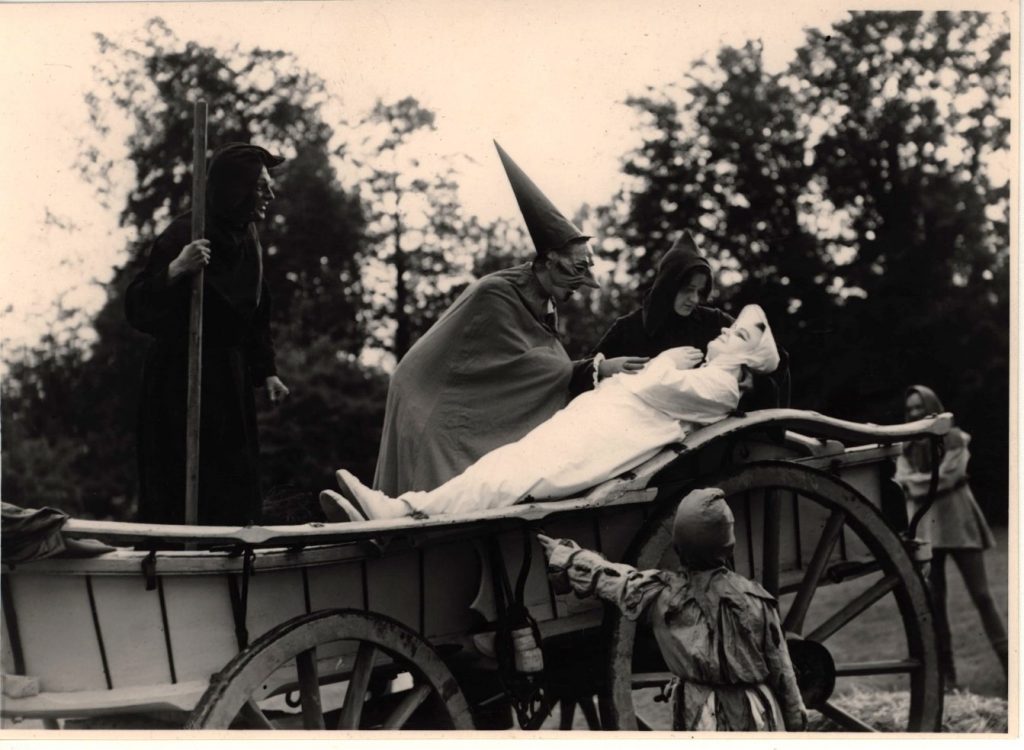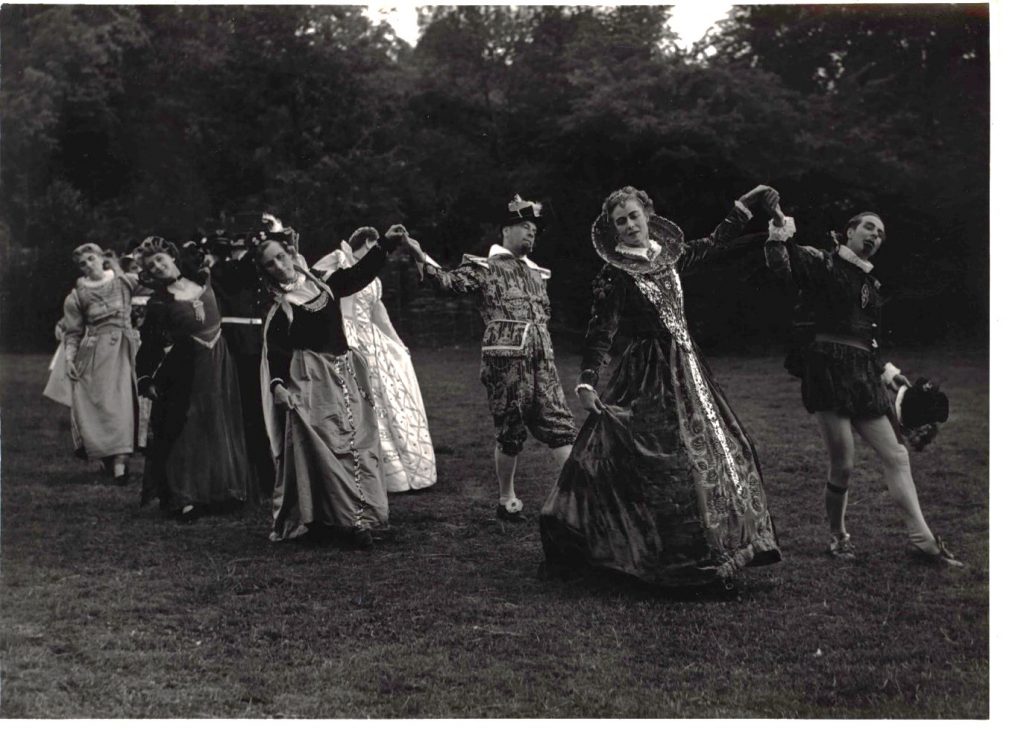Blog post by Dr Caroline Morris
On 11th- 13th June 1953 at 9pm each night, Cirencester put on a Floodlit pageant in celebration of the Queen Elizabeth II’s coronation. In the souvenir programme, the chair of the organisation committee Lady Viola Apsley described the pageant as a tribute of loyalty to the crown which might have pleasured the first Queen Elizabeth.

The programme tells the reader that the pageant was ‘based on the true story of our ancient town ideally placed as it is on one of the great crossways of the history of England for the last 2000 years’. As you will see this ‘true story’ may be a little more fanciful than accurate.
The pageant begins with the arrival of Elizabeth I in Cirencester, an event which may well have occurred as she toured the country staying at great houses fairly regularly. In this depiction, she is presented with a pageant of Cirencester’s history by William Shakespeare and his players; this is definitely more like artistic licence.
The first part of the pageant takes us from King Arthur being crowned in St Cecilia’s chapel on Cecily Hill and King Alfred who was shown disguising himself as a wandering harpist in order eavesdrop on Vikings camped in Oakley wood (a site still called Alfred’s Hall); to King Edward I visiting on the way to Hailes Abbey and Cirencester Grammar School boys playing whilst William Tyndale, John & Sebastian Cabot, and Dick Whittington pass by.
During the interlude there was the mop fair which included a group of mummers.
The second part takes us from Parliamentarian troops preventing the townspeople maypole dancing to Charles II, accompanied by Catherine of Braganza, Nell Gwynn and Samuel Pepys, visiting and being presented with a petition to give aid to the wool trade, which he does by instigating an act of parliament that ‘everyone shall be wrapped in woollen cloth at burial’.

From Queen Anne and the Duke & Duchess of Marlborough visiting Thomas Master at the Abbey and then meeting Alexander Pope at the home of Allen Bathurst MP to George III and Queen Charlotte traveling through the town on their way to see the new canal at Sapperton before going to Cheltenham to see the ‘great tragic actress’ Sarah Siddons playing Lady Macbeth.
The pageant wrapped up with an urgent message to Her Majesty to return to London as England’s enemies were amassing in the channel. However, she insisted on seeing the citizenry dance before she left.

This pageant was as much a celebration of the history of Cirencester as it was for the young Queen’s coronation – well, an embellished history at the very least. It was also a who’s who of Cirencester families and included many Cirencester societies. One of the most interesting of the things I noticed about the pageant was from the fifth episode about the abbey, where most of the players were Polish, from the Cirencester Anglo-Polish society . Also, the ‘action’ included a sled pulled by England’s last remaining working draught oxen from the Bathurst estate. These Bathurst oxen appear numerous times in the museum archive having starred in amongst other photographs a carnival pulling a float and a drawing by Thomas Hennell, as well as their more usual work. We even know the name of two of the oxen and their handler in this photograph: Jimmy, Joey and Ted (Edward) Smith).

1. Many Poles came to Britain during the Second World War










